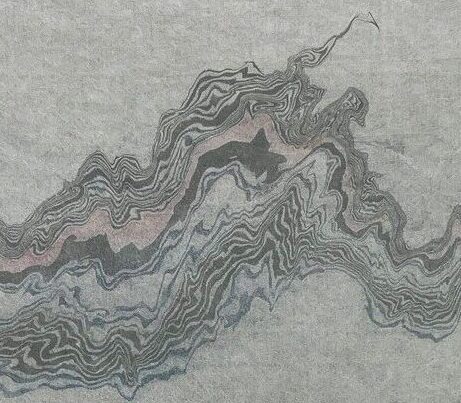The papers below demonstrate some of the variations and difficulties that can occur with different inks. All these papers were made on the same tray during an afternoon session

This is my handmade sumi ink, the paste diluted with an equal amount of distilled water. Ink flow is controllable, and I can achieve reasonably concentrated thick and thin rings that compress well.
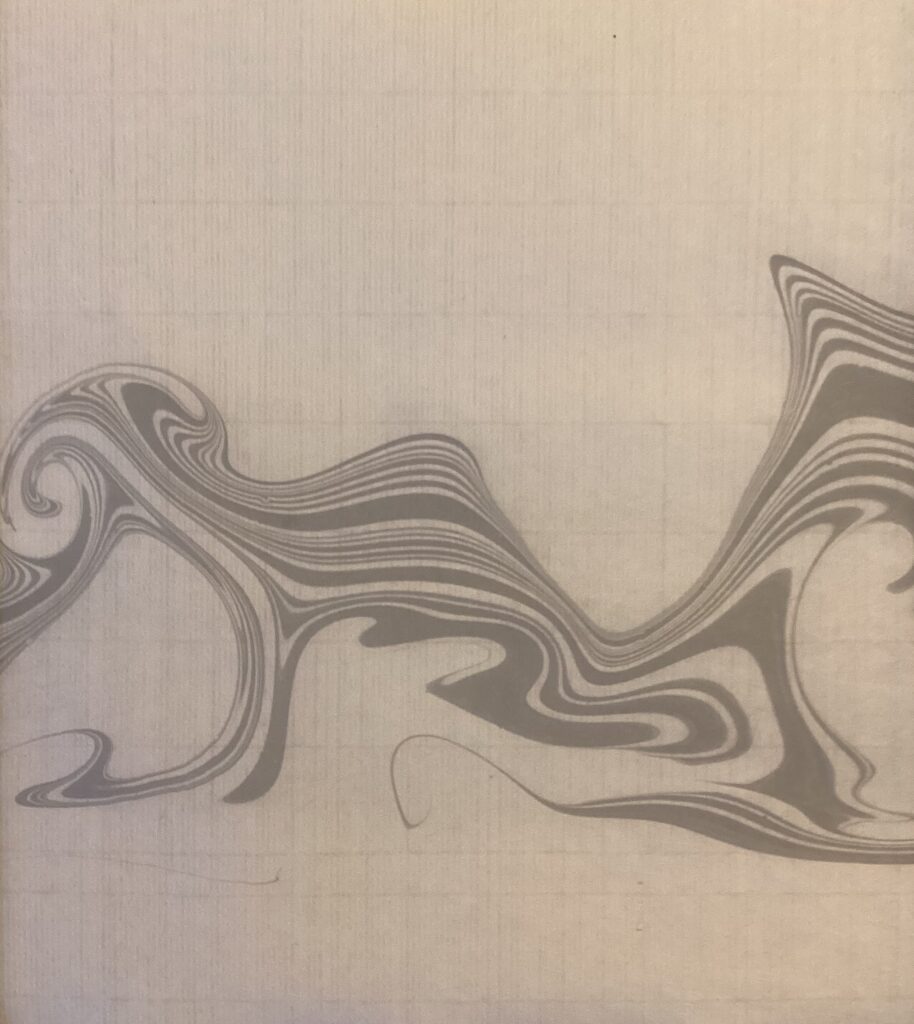
This is some of my old marbling paint, also diluted with water 1:1. It contains a higher concentration of hide glue but also some paste wax/soap that caused more expansion of the drop and made the rings more resistant to compression with the dispersant brush. Consequently, the lines are not as fine or crisp and the intensity is reduced compared to the ink specifically made for suminagashi.
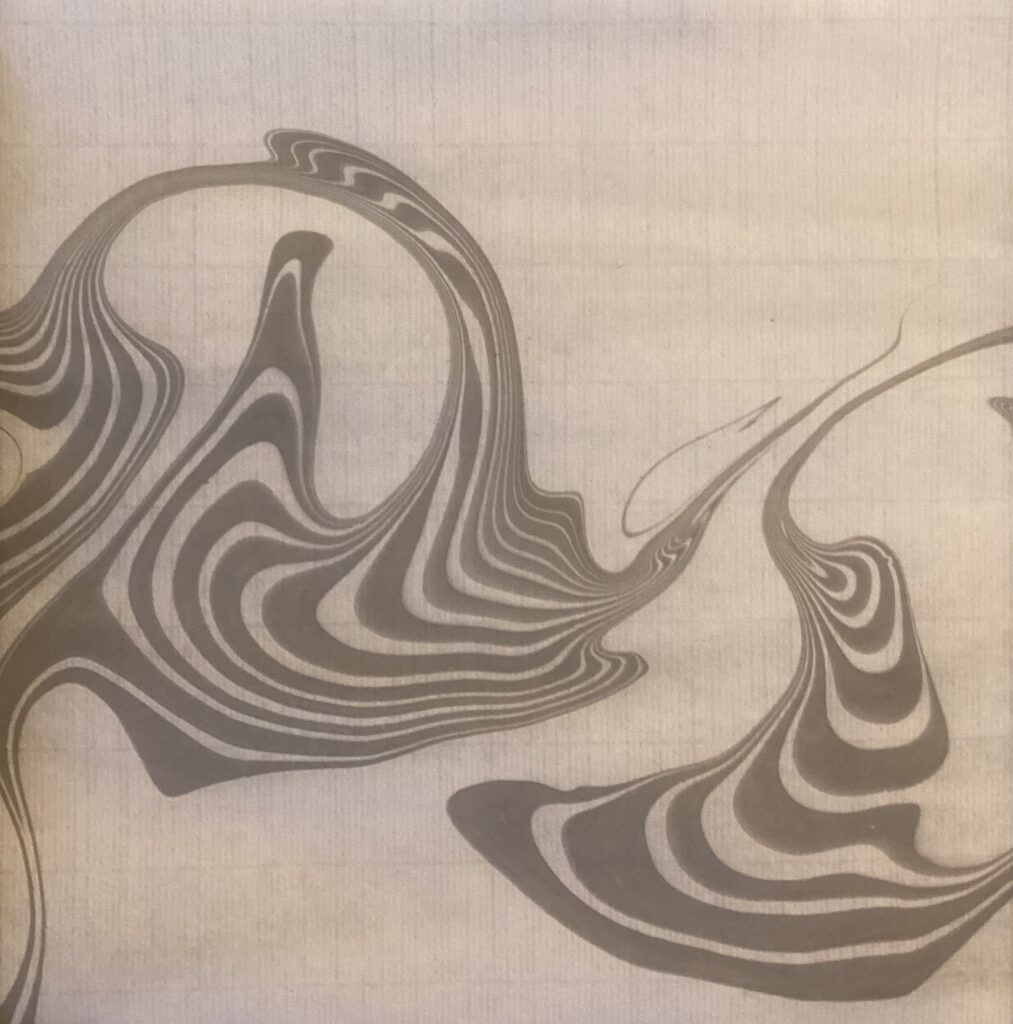
This is Kobaien ink concentrate, undiluted. The ink spread was harder to control. It required about four times the concentration of dispersant on the clear brush to balance and control the spread of the black ink but, even then, the ink flowed from the brush too quickly to enable varying the size of the drops. As a result there is minimal variation in ring width.
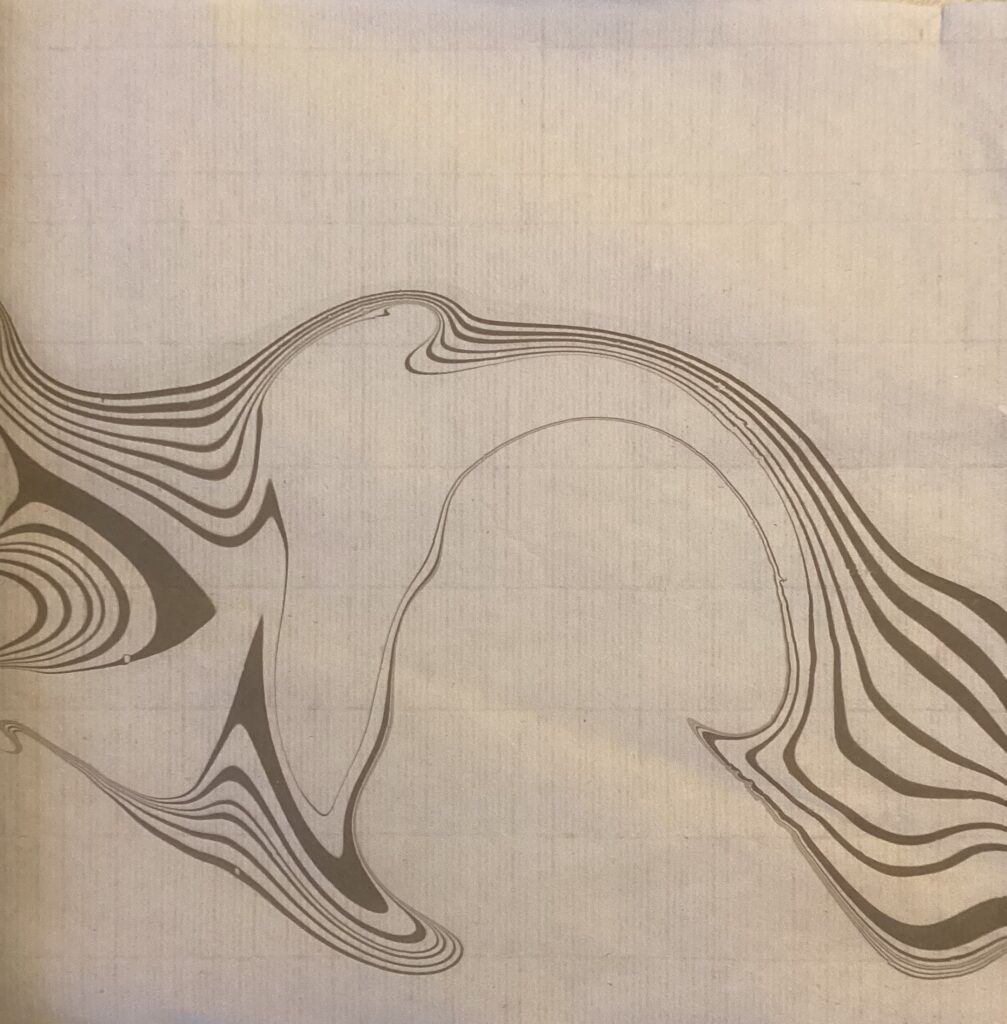
This is Boku Undo liquid ink concentrate, undiluted. It spread vigorously but not as much as the Kobaien. It also required about four times the dispersant concentration to counteract its strength. However, it responded better to manipulation of the pattern with the dispersant brush. The color has a slightly brownish tinge.
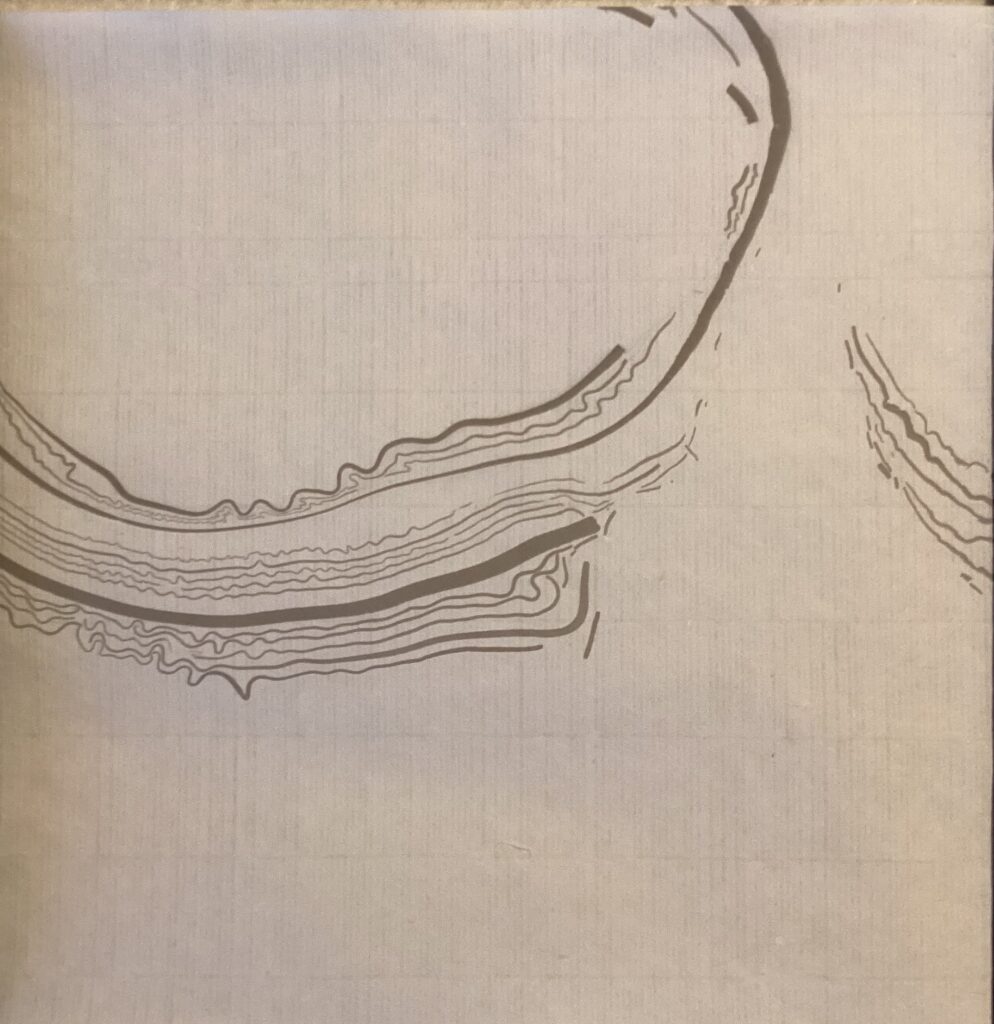
This is sumi ink ground from an ink stick. The ink spread vigorously. It did not respond well to compression of the rings with the dispersant brush, instead the lines fractured.
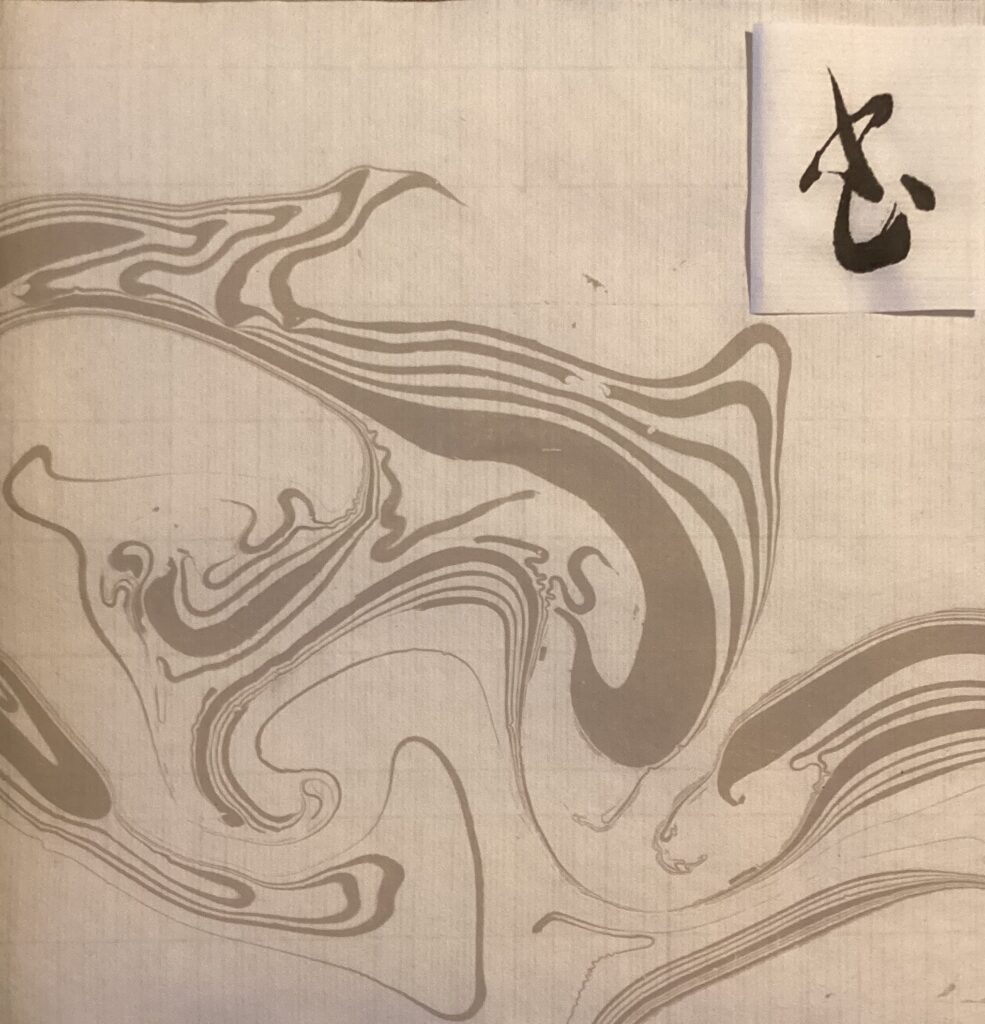
This trial was with another ink stick, 30 minutes of grinding – sufficient for calligraphy but poor for suminagashi. Ink sticks have a higher concentration of hide glue compared to the other paints. This causes hardening of the ink film and the fracturing of the rings.
